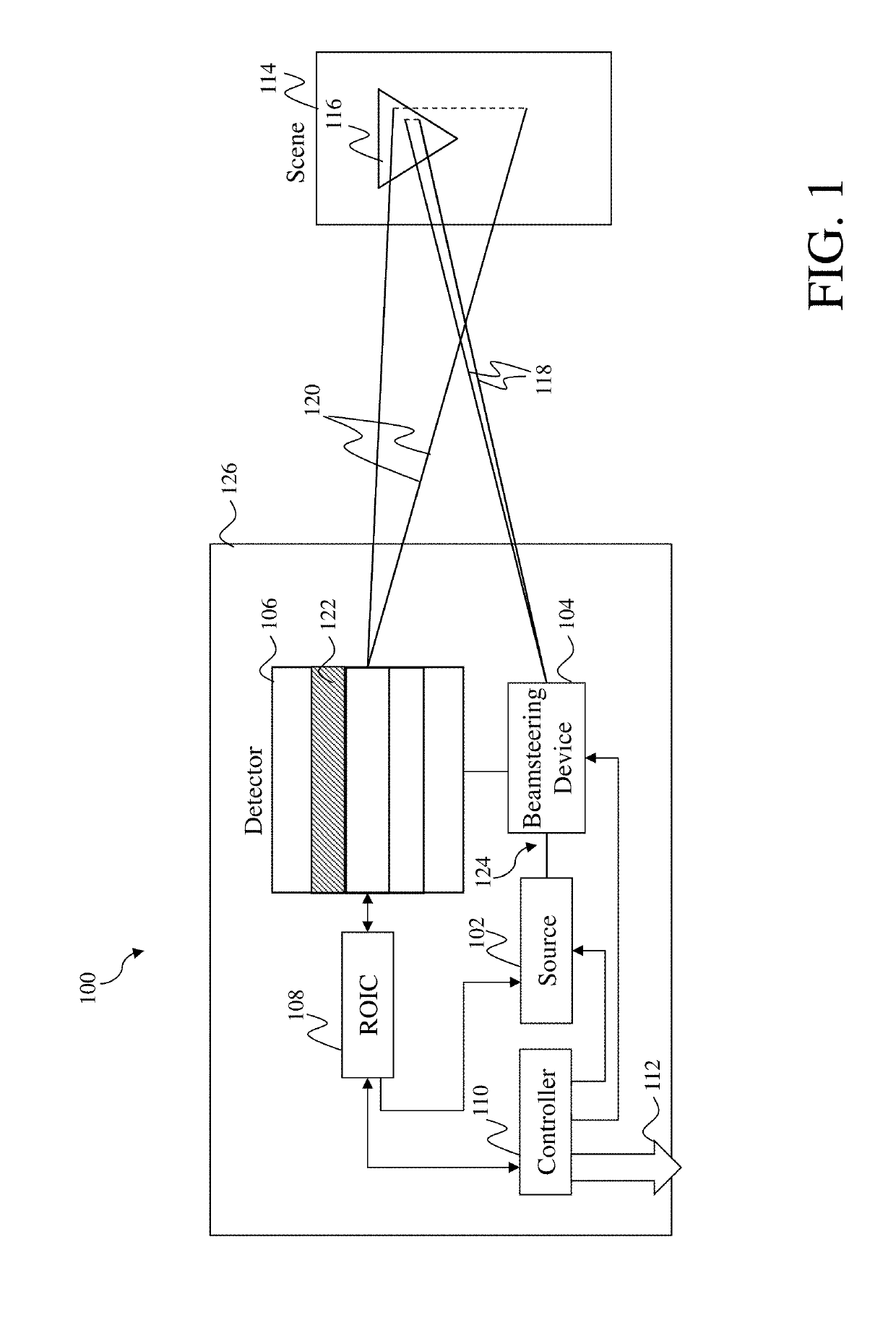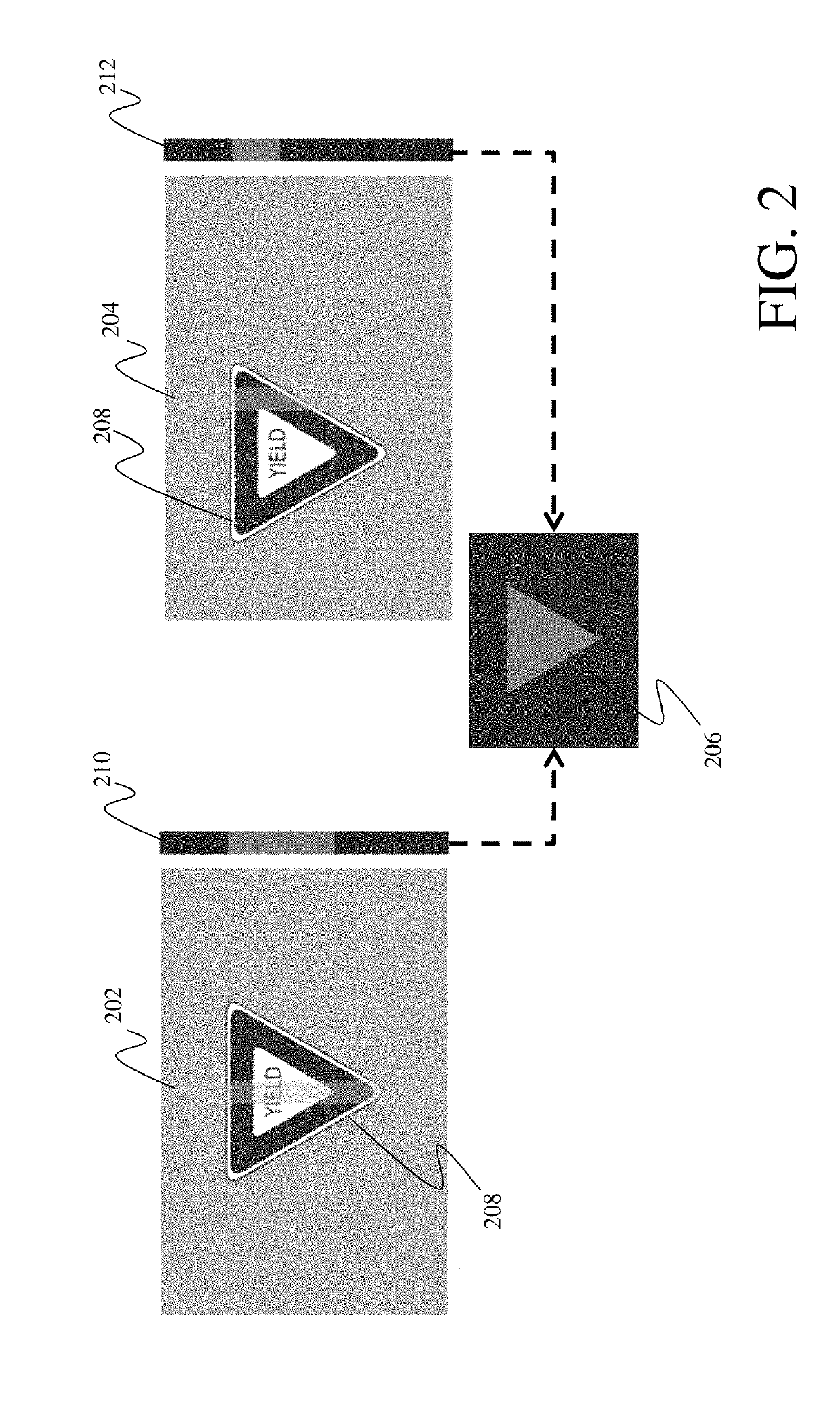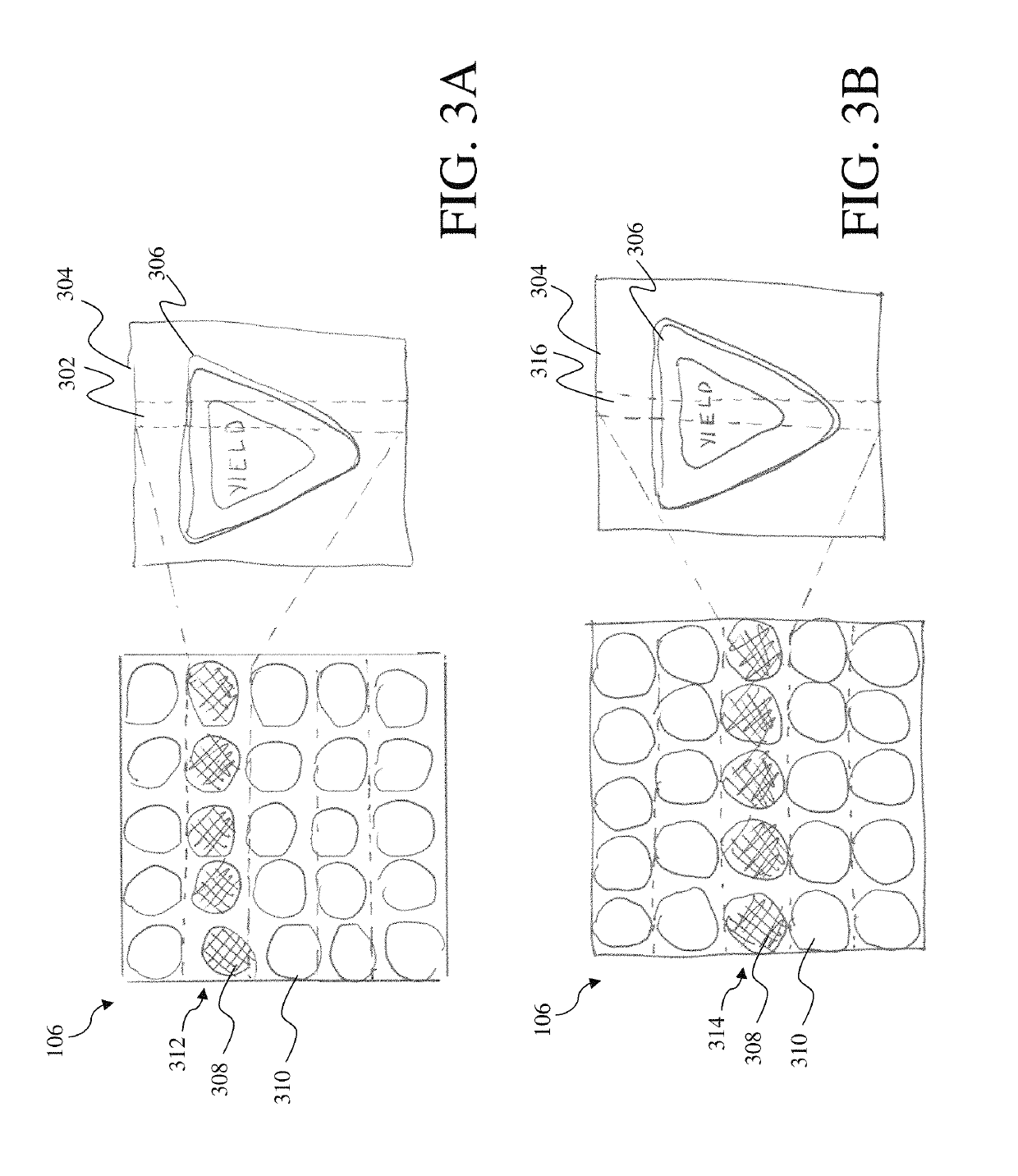Optical system for object detection and location
an optical system and object technology, applied in the field of optical systems for object detection and location, can solve the problems of increasing the required input power and the size of the active optical system, increasing the size, weight and power of the optical system, etc., to improve the efficiency of operation, improve the effect of weight reduction and improved size reduction
- Summary
- Abstract
- Description
- Claims
- Application Information
AI Technical Summary
Benefits of technology
Problems solved by technology
Method used
Image
Examples
Embodiment Construction
[0023]Aspects and embodiments relate to optical systems and methods of using the same. In particular, aspects and embodiments are directed to laser radar imaging systems and methods for detecting objects at long ranges, in low-visibility conditions, and in other restricted view conditions. Various embodiments include solid-state active components and / or non-mechanical optical elements for improved weight reduction and reduced power consumption during such conditions. As further discussed below, reflections of one or more scanned pulsed laser beams from an illuminated area of a scene may be used to identify the presence of an object in the scene, locate and determine an angular-range and distance (i.e., range) to the object, detect a spatial profile of the object, and generate an image of the object. In particular examples, the imaging system may locate small objects at great ranges (or other difficult to detect objects) based on a comparison of one or more signal levels correspondin...
PUM
| Property | Measurement | Unit |
|---|---|---|
| eye-safe wavelength | aaaaa | aaaaa |
| wavelengths | aaaaa | aaaaa |
| wavelength | aaaaa | aaaaa |
Abstract
Description
Claims
Application Information
 Login to View More
Login to View More - R&D
- Intellectual Property
- Life Sciences
- Materials
- Tech Scout
- Unparalleled Data Quality
- Higher Quality Content
- 60% Fewer Hallucinations
Browse by: Latest US Patents, China's latest patents, Technical Efficacy Thesaurus, Application Domain, Technology Topic, Popular Technical Reports.
© 2025 PatSnap. All rights reserved.Legal|Privacy policy|Modern Slavery Act Transparency Statement|Sitemap|About US| Contact US: help@patsnap.com



